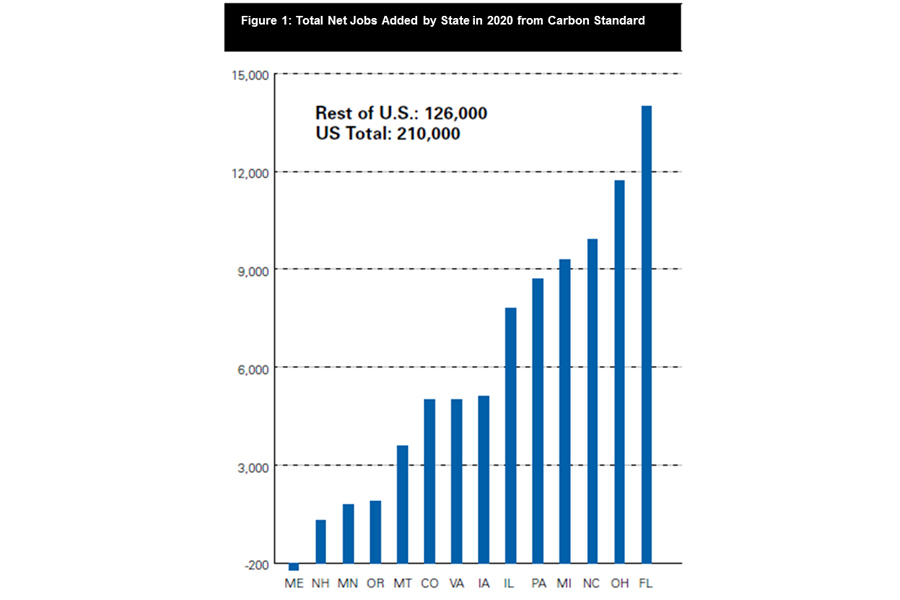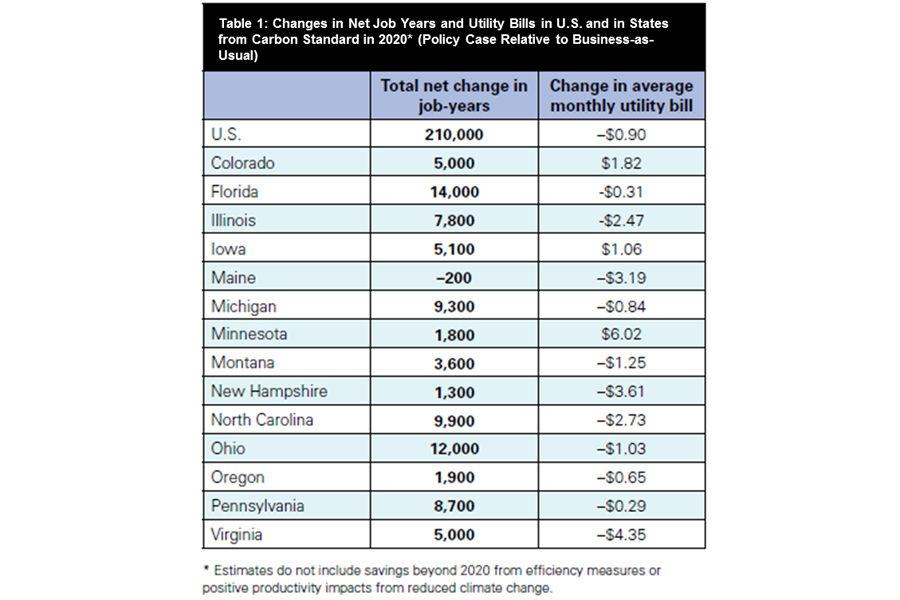
No More Free-Pass for Carbon Pollution (Op-Ed)

Laurie Johnson, chief economist at the Natural Resources Defense Council's climate and clean air program, contributed this article to LiveScience's Expert Voices: Op-Ed & Insights.
For more than 40 years, the Clean Air Act has proved itself an effective, efficient and flexible tool that has safeguarded public health while fostering economic growth and innovation.
My colleagues and I at the Natural Resources Defense Council (NRDC) released a new analysis today that finds curbing carbon pollution from power plants using the Clean Air Act would have similarly positive results.
In the analysis — "Less Carbon, More Jobs, Lower Bills" — we found that NRDC's proposal to cut carbon pollution would create new jobs nationally and lower the average American's monthly electric bill. This analysis is based on a proposal detailed in our December 2012 report "Closing the Power Plant Carbon Pollution Loophole: Smart Ways the Clean Air Act Can Clean Up America's Biggest Climate Polluters."
Specifically, we found that our proposed carbon standards would, in 2020, increase national employment by a net total of 210,000 jobs, lower average residential electricity bills by $0.90 per month and have essentially no overall impact on the nation's GDP.

The analysis
In December 2012, NRDC shared its proposalfor how the EPA could set carbon standards for power plants that would achieve big reductions at far lower cost than conventional wisdom would have suggested. At the same time, these actions would create vast benefits for the American people, including a surge of investment in energy efficiency. The plan would give EPA the flexibility it has under the Clean Air Act to set carbon reduction goals based in part on states' current electric generation mixes. It would also allow power companies to draw from a wide range of options to meet emissions reduction targets.
Sign up for the Live Science daily newsletter now
Get the world’s most fascinating discoveries delivered straight to your inbox.
With that kind of practical, flexible approach, we showed that EPA could reduce carbon emissions by 26 percent by 2020 (relative to the peak levels in 2005), while at the same time lowering electricity prices. The price tag? About $4 billion in 2020. But the benefits — in saved lives, reduced illnesses and avoided environmental damage — would be worth $25 billion to $60 billion, or six to 15 times greater than those costs.
That report outlined the big picture. Today, we are releasing a companion analysis that digs into the details and examines how our proposal would affect jobs, GDP and electricity bills for average Americans. This analysis also examines how our proposal would look in several states around the country.
Nationally, we see a total net gain of 210,000 jobs in 2020. Florida, Illinois, Michigan, Montana, New Hampshire, North Carolina, Ohio, Oregon, Pennsylvania and Virginia jobs would increase and electric bills would decrease. Colorado, Iowa and Minnesota would see job gains, and Maine residents would save on their electric bills.
Energy efficiency upgrades are the primary driver of job gains in the analysis, responsible for 236,000 additional direct jobs in 2020. Shifts in other sectors (including not just power plants, but also industries that supply inputs to the production of these plants) would reduce the net increase to 210,000; some job gains are also offset because households would be spending money on energy efficiency measures instead of other economy-wide goods and services.
Energy bill savings occur even though the efficiency programs add costs to electricity bills. This is because these charges are still lower than the cost of electricity required without such efficiency changes. While electricity rates (cents per kilowatt-hour) could go up modestly in some cases, electricity bills (rate multiplied by usage) go down, on average, because energy efficiency improvements reduce overall electricity consumption.

Conservative estimates
Our estimates are conservative.
In the report, changes in utility bills capture savings from energy efficiency only for the year 2020, yet energy efficiency upgrades installed up to that point will continue to have benefits for consumers for many years beyond. The bill savings we estimated reflect up-front charges on electricity bills for energy-efficiency programs and investments in cleaner generation, all of which occur in 2020, minus savings gained from avoiding some energy generation in 2020 alone).
Additionally, the analysis did not include two positive impacts our proposal would have on GDP; due to modeling limitations, we had to leave these effects out. First, we did not calculate productivity improvements to the economy that would result from the $25 billion to $60 billion in health and environmental benefits. These improvements could be significant: a series of studies led by Dale Jorgenson at Harvard University concluded that the healthier workforce resulting from the Clean Air Act increased GDP by as much as 1.5 percent by 2010. Similar to other environmental damages , climate change disrupts worker productivity because of work days lost to extreme weather (e.g. from damages to homes, businesses, and transportation and other infrastructure) and climate-related illnesses (e.g. exacerbated respiratory illnesses such as asthma and bronchitis, and emergency room visits during heat-waves for various health impacts). Extreme heat also directly lowers the productivity of outdoor workers.
Second, our proposed carbon standard reduces wholesale electricity prices in the regions we studied in the eastern part of the country due to reduced electricity demand and the form of the output-based standard (the regulatory limit on power-plant outputs). However, we did not estimate the positive effect this price drop would have on businesses and economy-wide production.
Details aside, though, the big picture is clear. Climate change is fueling extreme weather, heat, drought, forest fires, asthma and many other effects that are harming our children's health and their future. Yet, one of the largest sources of the dangerous heat-trapping gases driving climate change, our nation's power plants, emit with no carbon limits whatsoever. They areresponsible for almost 40 percent of the carbon dioxide pollution in the United States.
President Obama has laid out a robust plan for tackling climate change, noting that we have an obligation to protect future generations from its effects.
"Today, for the sake of our children, and the health and safety of all Americans, I'm directing the Environmental Protection Agency to put an end to the limitless dumping of carbon pollution from our power plants, and complete new pollution standards for both new and existing power plants," he announced in presenting his climate plan on June 25, 2013.
The centerpiece of that plan is the task of cleaning up dangerous carbon pollution from power plants. These plants are our biggest source of carbon pollution, and while they must observe strict limits for arsenic, mercury, lead and other emissions, they face no limits for their carbon dioxide pollution.
As President Obama said, "That's not right, that's not safe, and it needs to stop."
So the president is outlining a common-sense step, using a common-sense tool: the Clean Air Act. Just as we used this act to set limits for arsenic, mercury, lead and other dangerous pollution coming from power plants, we can set limits to efficiently cut the carbon pollution these plants emit.
Our two analyses demonstrate that NRDC's proposal for reducing carbon pollution from power plants by 26 percent in 2020 will add over 200,000 jobs to the U.S. economy, save Americans money on their electric bills and avoid up to $60 billion in health impacts and other climate-related costs.
When we consider that climate change is already happening in the United States, already affecting communities all across the nation, we think that having a path forward to less carbon, more jobs and lower bills is the right path to take.
The views expressed are those of the author and do not necessarily reflect the views of the publisher. This article was originally published on LiveScience.com .










